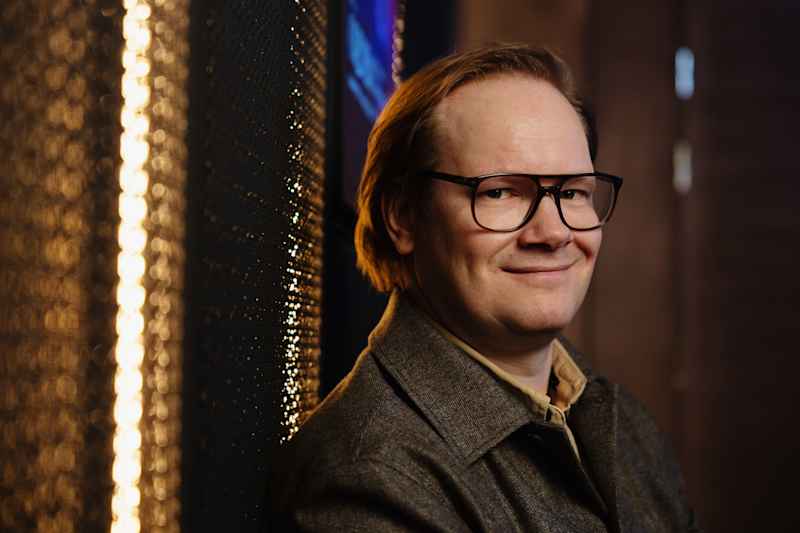Brezhnev in swimming trunks – The Helsinki Effect film highlights the soft side of 1970s superpower leaders
In the Helsinki Effect documentary, artificial intelligence breathes life into the voices of deceased statesmen. The film sheds hope on the impact of diplomacy.
A summit of this size in Helsinki, then still considered remote, was an event. The heads of almost all European countries, plus the US and Canada, were present (and not a single woman).
– The tensions then were very similar to those now. There was the Middle East, there was Israel and Palestine. Today, of course, there is Russia, but then there was the Soviet Union, competing for world power with the US and China, which had just become a great power,” Franck says.
On the white canvas, the event will make an impact. One black car after another, flags flying, makes a turn in front of Finlandia Hall. The news media of the entire Western world point their cameras at the prestigious crowd gathered in the great hall.
The Finnish Broadcasting Company recorded the conference on the film moment by moment. There were as many as 14 shooting groups present. Among other things, the harvest of this shooting contract * Helsinki Effect * takes advantage of.
How to make a compelling film about a meeting?
*Helsinki Effect*Director-screenwriter Arthur Franck is remembered for, among other things, documentary*Tamminiemi Nesting Advocates*. It also moved in Kekkoslovakian atmosphere, but mainly in Finnish media policy.
Now Franck is dealing with world politics and Cold War, and the hottest topic of the 1970s, the liability. The result is a flying and emotional film perhaps the most unclear subject in the world.
As he wrote the film, Arthur Franck avoided thinking of a Finnish viewer who may have personal memories of the ethy or who has been told about the conference at school.
– Certain things are obvious to us Finns. That’s why I decided to tell the viewer of this story, who was not familiar with it, says Franck.
In addition to the archive films of YLE and other international television companies, Franck found a new and quite interesting source as he focused on the subject.

Meetings behind the scenes
Discussion sterroads were sleeping in Ruusunen’s dream in the US archives until 2008. They were then released from the encryption and were given, among other things, for researchers and now also a film screenwriter.
– The television archive films show what they wanted to look like outwards. Memoirs, on the other hand, tell what happens behind closed doors. There is a tension between these two materials, which I wanted to study and hopefully it will be visible on the movie fabric, Franck says.
The intimate discussions of the world’s camper are bringing a whole new level to the * Helsinki Effect * document. The superpower leaders are angry, laughing and fooled, throwing the flap.
Artificial intelligence brought to life the voices of deceased statesmen
Discussions of Heads of State are heard in the * Helsinki Effect * movie as from the mouth of the speakers themselves. Usually, documents use actors to revitalize text. However, Franck has exploited the sound chubby simulation tool.
This means that the text \”presents\” artificial intelligence with the genuine voices of the speakers.
– It was a surprise that artificial intelligence does this so well. It was able to clone the sounds of Kissinger, Brezhnev and Ford. The sounds are not perfect, but I would say that in the cinematic sense they are satisfactory, says Franck.
Brezhnev speaks English in these scenes because the transcripts were made in English. In reality, he spoke Russian and used an interpreter.
– Surprisingly, technology can humanize moments, people and characters. The film openly tells how the sounds are made so that the viewer will not be cheated, says Arthur Franck.
The spirit of Helsinki and the wing flapping of the Etyk butterfly
Leonid Brezhnev’s goal at the OTCE was to cement the post -World War II borders in Europe. Among other things, the Soviet leader wanted to prevent the merger of Germany. Perhaps he already heard the Eastern Bloc Socialist Community in his joints.
Brezhnev felt the OSCE resolution as a victory for the Soviet Union. At the same time, however, he approved the mitigation of the citizens’ freedom of expression and maneuver. It is this that many researchers are considered by Helsinki as an effect, which gave a start to the fall of the Soviet Union.

In today’s world political situation, the film seems topical. Now we are talking about the death of diplomacy and the sudden movements of Russia and US leaders are being watched.
– During the Cold War, there were dramatic moments and thought that we were going to the war. It was scary, as the nuclear weapons had just come to the stage.
The OSCE approached the situation with slow diplomacy. In his film, Franck wants to cast faith and show that everything is temporary. Perhaps again we will see how to start to \”slip\” and move on to more stable times.


